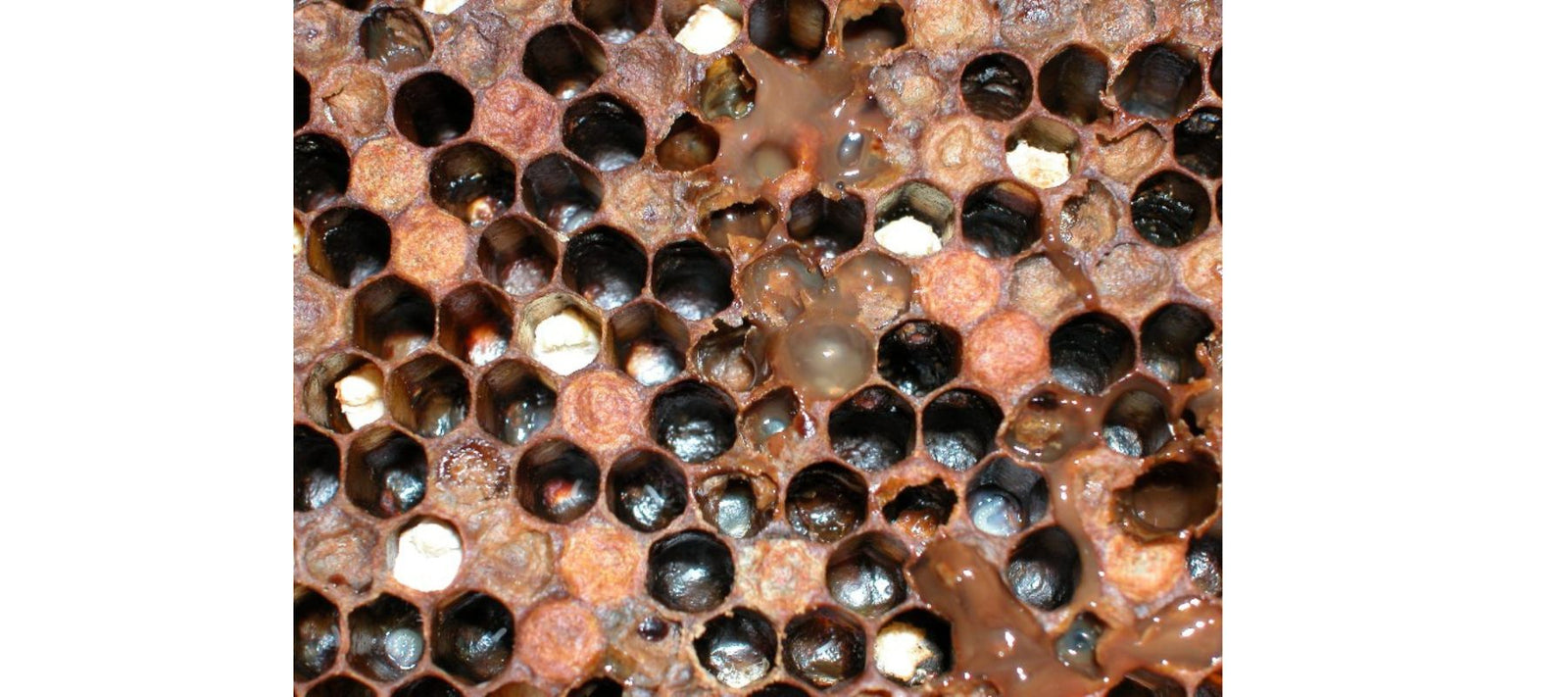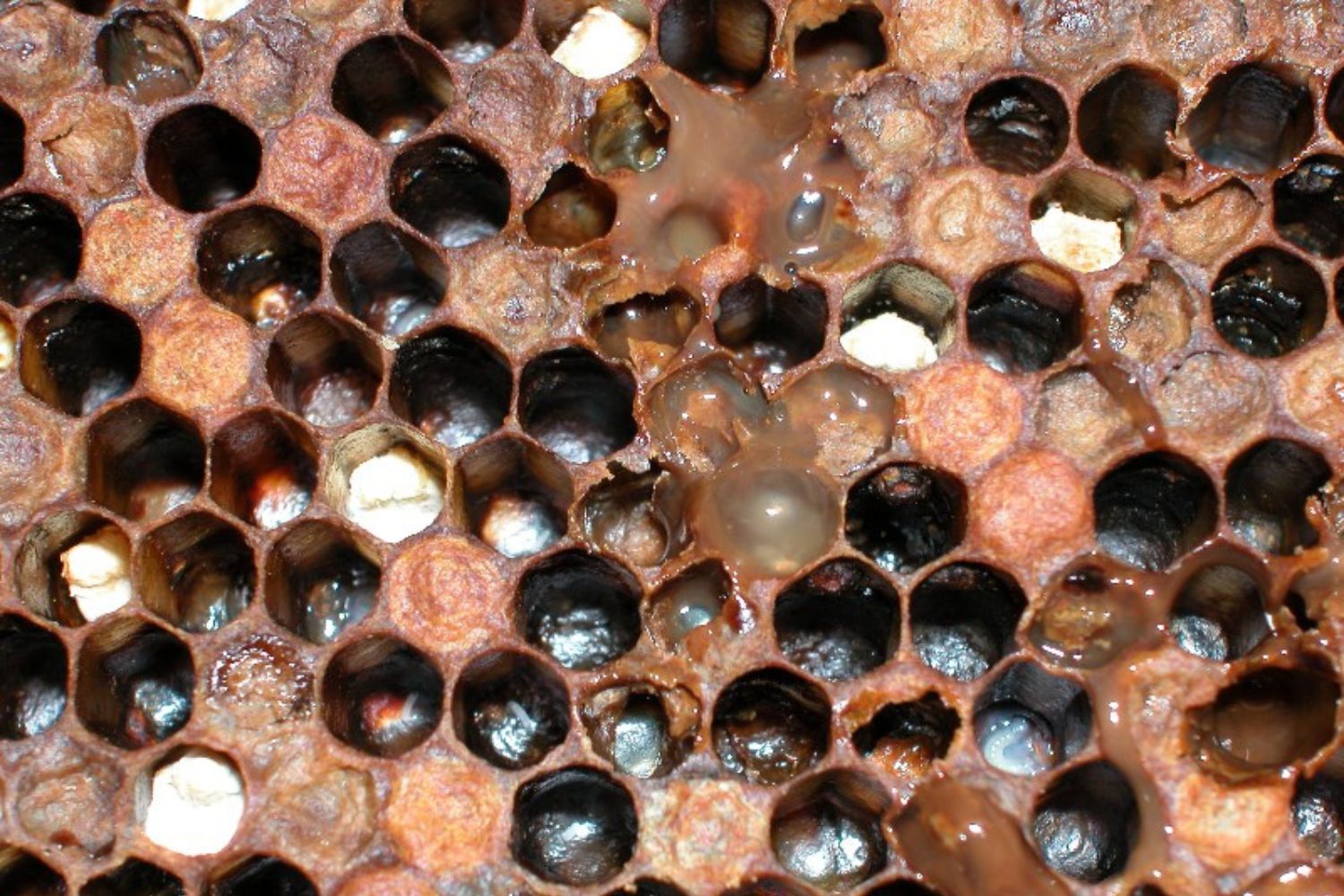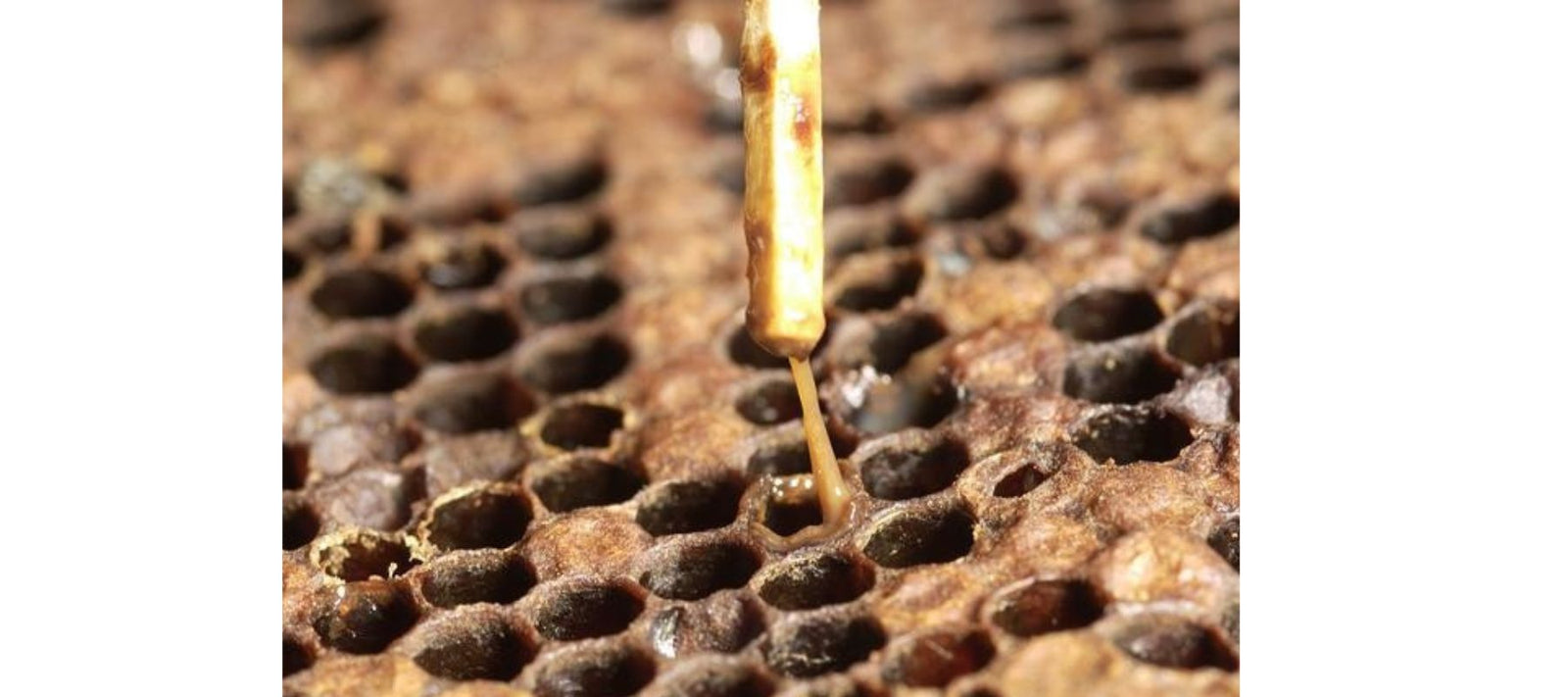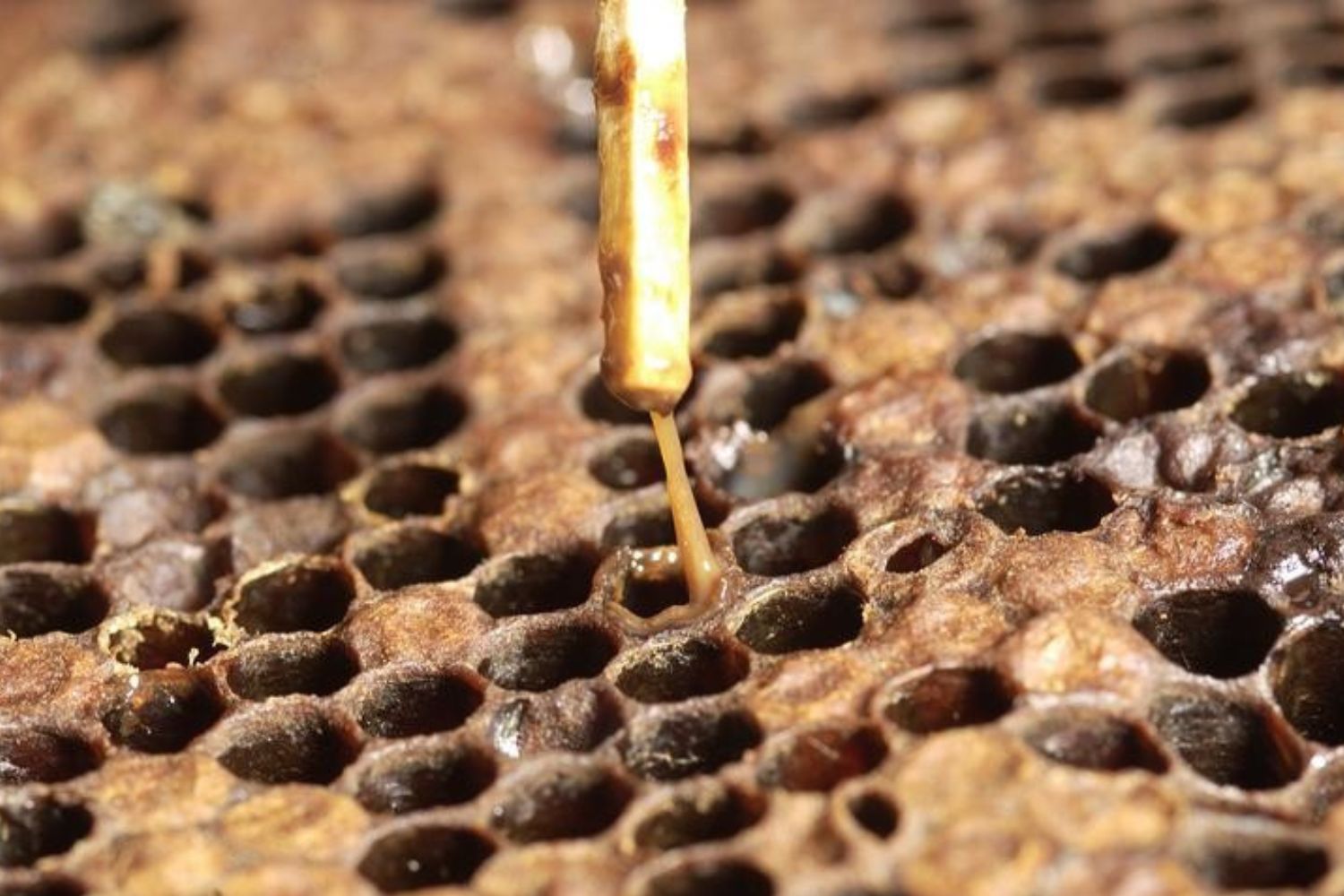Your Cart is Empty
BEEKEEPING PESTS AND DISEASE
American Foulbrood
American Foulbrood is a notifiable disease. If you suspect AFB may be present in your hive contact your local Department of Agriculture or apiary inspector immediately. They can provide support to identify the disease correctly and will make recommendations for management.
American foulbrood (AFB) is an infectious and highly destructive disease caused by the spore-forming bacterium, Paenibacillius larvae. The spores infect the bee larvae which typically die after they have been capped. AFB affects strong healthy and weak colonies, and the infection is fatal to the colony.
American foulbrood has spread to much of Europe and North America. Central America, parts of South America, Africa and Asia, Australasia, and other Pacific territories are also affected.
The most widespread and potentially devastating brood disease, American foulbrood is characterised by brood cell capping becoming sunken and discoloured as the infected brood beneath dies and decays.
Bee larvae under three days old ingest the spores which germinate in and derive nourishment from the gut of the larva. In its vegetative form, the bacteria will die along with the larva, but will first produce many millions of spores which spread throughout the hive and then to other colonies.
If left untreated or unmanaged, almost all infected hives will weaken and die over the course of between a month and two years.
Within the hive, larvae become infected when they are fed contaminated honey by nurse bees. The bees themselves spread the spores further as they attempt to clean up the mess of dead larvae. The main source of infection between colonies is the use of contaminated equipment. Beekeepers can introduce spores when interchanging frames, supers or other equipment, sharing uncleaned equipment or feeding contaminated honey. The disease is also spread between colonies by robbing of infected hives.
The most widespread and potentially devastating brood disease, American foulbrood is characterised by brood cell capping becoming sunken and discoloured as the infected brood beneath dies and decays. Some of the cells may be visibly punctured where bees have tried to remove the dead larvae from infected cells. When the infection becomes severe, the brood comb will have an uneven appearance with healthy cells interspersed with infected ones.


Patchy brood pattern characteristic of AFB infection
A strong odour, similar to rotting meat, is a sign of advanced AFB infection. Dead larvae will “rope” meaning that their remains will stretch out if you poke a matchstick into an infected cell and gently pull - a 3-5cm long dark brown ropy thread emerges.


AFB-infected dead larvae “roping” when poked
Prevention is important as there is no treatment that can cure an AFB infection. Maintaining strong colonies, while advisable, will not prevent AFB as the disease infects both strong and weak colonies equally. Some colonies show some resistance which is referred to as Hygienic Behaviour. This trait can be selected by queen breeders and is worth considering when re-queening.
Cleanliness and vigilance are the keys to curbing the spread and impact of American foulbrood as spores can remain viable for over 50 years. Carry out regular hive inspections to ensure that any infection is quickly identified.
Avoid feeding bees with honey unless it is from your own disease-free hives.
Sterilise equipment such as hive tools if moving from one hive to another.
Comb-culling on a three-year cycle can reduce the risk of AFB.
Establishing a Barrier Management System will help to minimise the spread of the disease. An effective system of barrier management maintains separation of bees, honey and equipment between hives or groups of hives. This ensures that infected equipment is not interchanged thus reducing the risk of cross-infection. When buying hives containing bees, inspect all brood frames thoroughly before purchase. Consider siting new colonies separately to your existing hives for a few months and monitor for signs of infection. When purchasing second-hand equipment be sure it has been sterilised prior to use.
American Foulbrood is a notifiable disease. In many jurisdictions, infected bee colonies and hives must be destroyed. In some regions equipment and supers can be salvaged following sterilisation by an approved method such as gamma irradiation. Contact your local apiary inspector for confirmation of diagnosis and region-specific advice.
Go to our support portal to read about Flow Frame sterilisation and irradiation.
Beehives with American Foulbrood should be incinerated due to spores that remain viable for up to 40 years. Seek advice on the appropriate method, follow local fire regulations and take all necessary safety precautions.
Locate the source
To stop the spread of American foulbrood, it’s important to figure out how your hives came to be infected in the first place. Consider:
- recently acquired equipment or hives
- shared equipment such as a centrifuge
- re-used old stored material
- nearby apiaries
- nearby rubbish dumps
- nearby extraction sheds
- recently introduced swarms
- visits by other beekeepers
Sources:
- Liz Frost. Hive Health: Foulbrood - AFB & EFB. TheBeekeeper.org
- dpi.nsw.gov.au/__data/assets/pdf_file/0003/66216/American-foulbrood.pdf
- afb.org.nz/
- u.osu.edu/beelab/files/2015/05/AFB-tew-1daf1ga.pdf
- bulletinofinsectology.org/pdfarticles/vol62-2009-093-097gende.pdf
Picture Credits:
- The Animal Plant Health Agency (APHA), Crown Copyright
- The Animal Plant Health Agency (APHA), Crown Copyright
- The Animal Plant Health Agency (APHA), Crown Copyright
Beekeeping requires specialist skills, carries inherent dangers, and is often subject to regulation. Instructional content we provide is intended as a general guide only and may not be applicable to your specific circumstances. If in doubt, seek assistance from your local authority, a professional beekeeping service or your nearest beekeeping association.















